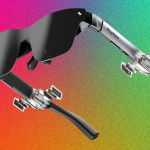The National Aeronautics and Space Administration’s (NASA) Orion spacecraft, which is currently part of the agency’s first mission of the Artemis program, is now officially on its way back to Earth. Orion launched board the Space Launch in November, and throughout the mission, the spacecraft reached several milestones and set a new record. The return powered flyby burn, which used the Moon’s gravity to fling the spaceship back to Earth, began close to noon today and lasted for more than three minutes, with no footage or signal available from Orion during this period as the ship was flying behind the Moon.
NASA’s Orion Spacecraft Begins Final Leg Of Artemis 1 Mission
After it launched on the SLS and started its journey in orbit around the Moon, Orion’s mission profile has been centered around not only enabling NASA to evaluate the ship that will fly astronauts to the Moon but also gain a sense of the lunar environment for its lunar gateway space station. Before today’s burn, Orion was orbiting the Moon in a distant retrograde orbit (DRO). This orbit is part of a near rectilinear halo orbit (NRHO) followed by the Gateway, which is NASA’s lunar outpost to allow astronauts to dock before landing on the Moon.
The Gateway is a unique space station that is designed to fly without any crew for extended periods of time. This is part of NASA’s objective of sending long-duration missions to Mars, and the station is also central to the Artemis program. This is because astronauts will dock to Gateway inside Orion and then make their way to SpaceX’s Starship for a lunar landing. However, before the station comes online, Orion and Starship will dock with each other to complete the crew transfer.
The last images from Orion before today’s combinations blackout before the burn. Image: NASA
The burn started at 11:43 am eastern time today, and it lasted for three minutes and twenty-seven seconds. This was the longest duration that the ship’s main engine fired during today’s mission. While Orion will not land on Earth until later this month, this burn is crucial for the return journey and necessary to land the ship in the right place in the ocean.
NASA’s chief exploration mission planning Nujoud Merancy explained this importance by sharing that:
These burns have to be executed within moments of the timing. But really what its doing it’s doing is it’s timing the return trip. to Earth, and then targeting so that when Orion travels behind the Earth, that’s when the Pacific Ocean will be underneath the entry corridor. So we’re targeting for a very thin slice of atmosphere, and that’s where we do our aero capture. So the atmosphere actually slows Orion down and we need to make sure that all of that is set up precisely so that we can enter the atmosphere while the pacific is where the entry targeting is so that we can be landing right where the recovery forces are. So there’s a lot of calculations that go into it by the wider trajectory team. This is truly our deorbit burn so we’re doing a major maneuver right now that targets our entry in six days.
The burn uses lunar gravity to create momentum for its journey, and for this to happen, it has to come close to the lunar surface. Today Orion came 79 miles within the lunar surface, a little lower than the previous outbound burn that had set in on its journey in the distant retrograde orbit.
A remarkable view of Earth from the Orion spacecraft just as it regained communications earlier today following its return burn. Image: NASA
Viewers were in for a real treat when Orion regained contact with the deep space network after completing the burn as its camera showed a crater-filled lunar surface with the Earth (and Mars?) in the background. Within minutes after the ship regained contact, mission controllers confirmed that the burn was a success. The ship will splashdown on December 11th, culminating a 25-day journey.
The post NASA’s Orion Spacecraft Beams Back Breathtaking Views Of Earth As It Starts Return Journey by Ramish Zafar appeared first on Wccftech.







